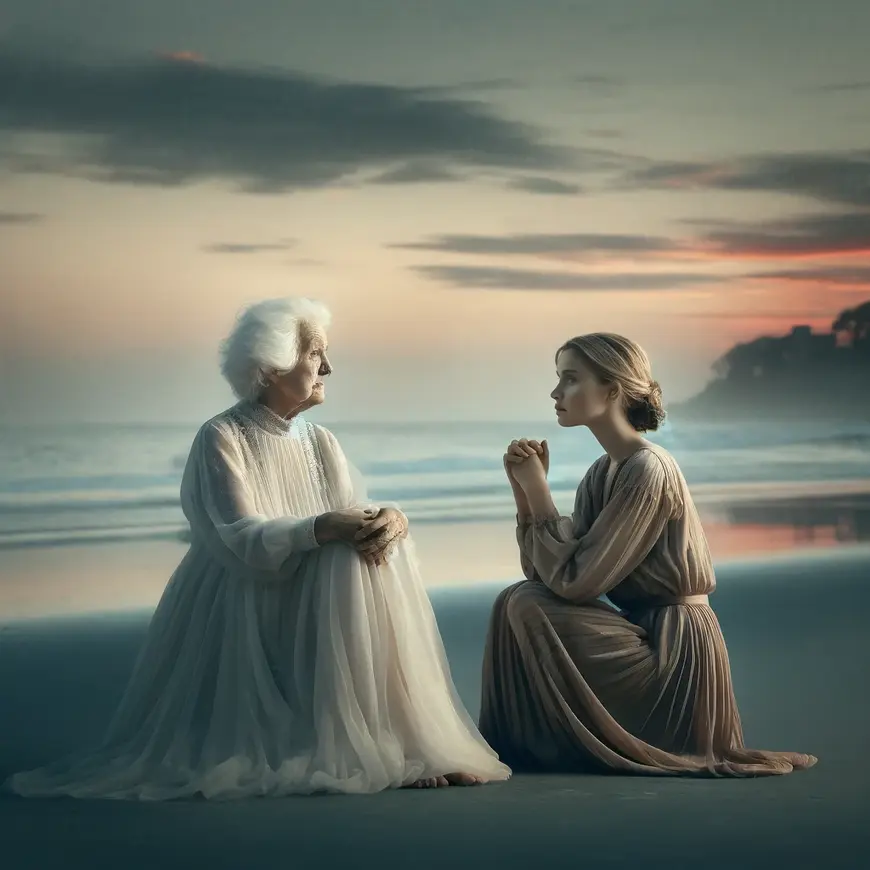An Intimate Voyage Through Time and Memory – A Review of Marguerite Duras’ “Savannah Bay”
Duras’ Elegy of Love and Loss – Navigating the Depths of “Savannah Bay“
In the realm of literature that explores the intricacies of memory, love, and the passage of time, Marguerite Duras‘ “Savannah Bay” stands as a poignant masterpiece that takes readers on an intimate journey through the lives of its characters. With prose that is both lyrical and evocative, Duras weaves a narrative that unravels the layers of human emotions, the beauty of remembrance, and the haunting persistence of the past.
Unveiling the Fragile Threads of Memory: The World of “Savannah Bay”
Imagine a world where the echoes of the past reverberate through the years, where the memories of youth and love are both a comfort and a burden. “Savannah Bay” immerses us in this world, where the aging actress, Madeleine, is haunted by the memory of her lost lover, Savannah Bay. Duras’ narrative traverses the realms of memory, love, and the intricate interplay of past and present.
The setting of “Savannah Bay” becomes more than a backdrop; it’s a canvas upon which the characters’ lives are painted. Duras’ prose paints a vivid picture of the intimate spaces and moments that shape Madeleine and Savannah Bay’s relationship, creating an atmosphere that is both nostalgic and contemplative.

Characters in the Spotlight: A Symphony of Emotions
The heart of “Savannah Bay” lies within its characters, each representing a facet of the human experience and the complexities of love and memory. Madeleine, the aging actress, becomes a vessel for readers to explore themes of longing, loss, and the passage of time. Her journey from youth to old age mirrors the broader human experience of grappling with the weight of memories.
Other characters, such as the enigmatic Savannah Bay and the compassionate Young Woman, provide contrasting perspectives on themes of love, connection, and the enduring presence of the past. Duras’ portrayal of these characters serves as a mirror to the intricate emotions that define human relationships and the ways in which individuals navigate the passage of time.
Themes of Love and Memory: Insights Explored
“Unraveling the tapestry of love and memory,” Duras seems to say, as she delves into themes that resonate deeply with the human experience. The theme of love is central to the narrative, as Madeleine grapples with the memories of her lost lover, Savannah Bay. Duras’ exploration of love prompts readers to reflect on the enduring power of romantic connections and the ways in which they shape our lives.
Memory is another prominent theme that surfaces throughout the narrative. Duras’ portrayal of the fragility of memory and the persistence of the past serves as a testament to the human capacity to hold onto moments of significance. The tension between the fleeting nature of time and the lasting impact of memories creates a narrative that is both melancholic and thought-provoking.
Prose as a Melody of Emotions: Duras’ Writing Style
Marguerite Duras’ writing style is a melody of emotions, a blend of vivid descriptions and introspective musings that capture the depth of human emotions and the power of memory. Her language is both poetic and evocative, creating an atmosphere that immerses readers in the inner worlds of the characters and the landscapes of their memories. Duras’ prose carries a weight that conveys the complexities of human emotions and the beauty of remembrance.
The novel’s structure is deliberate, with each scene serving as a window into the lives and memories of the characters. Duras’ writing style reflects the intricate rhythms of love and memory, where the past and present coexist in a delicate dance, creating a narrative that is both contemplative and emotionally resonant.

Notable Quotes from “Savannah Bay” by Marguerite Duras
- “Memory is a mirror that scandalously lies.”
- Explanation: This quote highlights the theme of unreliable memory in “Savannah Bay.” Duras often explores how memories can be distorted or selective, reflecting personal biases and emotions rather than objective truth.
- “You speak of love as if it were a light, but love is a shadow.”
- Explanation: This quote reflects the complex and often painful nature of love depicted in the play. Love is not portrayed as purely positive or illuminating; instead, it is intertwined with darkness, loss, and longing, creating a more nuanced portrayal.
- “Time doesn’t pass; it continues.”
- Explanation: This quote underscores the play’s exploration of the nature of time and memory. Duras suggests that time is not linear but a continuous presence that influences the characters’ present and future, merging past experiences with current realities.
- “There are places that we never leave, even when we are no longer there.”
- Explanation: This quote emphasizes the enduring impact of certain locations on a person’s psyche. In “Savannah Bay,” physical places hold emotional significance and memories, shaping the characters’ identities and experiences even after they have physically moved on.
- “In your eyes, there is a whole world that you never talk about.”
- Explanation: This quote highlights the theme of unspoken emotions and hidden depths within individuals. The characters in “Savannah Bay” often grapple with feelings and memories that they cannot fully articulate, suggesting that much of human experience lies beneath the surface.
Trivia Facts about “Savannah Bay”
- Premiere and Publication: “Savannah Bay” premiered in 1983 at the Théâtre du Rond-Point in Paris. The play was written by Marguerite Duras, a prominent French writer, and filmmaker known for her evocative and emotionally charged works.
- Themes of Memory and Loss: The play delves deeply into themes of memory, loss, and the passage of time. It explores the fragmented and unreliable nature of recollection, as the characters grapple with their pasts and the haunting memories that shape their present.
- Minimalist Setting: “Savannah Bay” is known for its minimalist staging. The sparse set design and limited props create an intimate atmosphere, focusing the audience’s attention on the dialogue and the emotional interactions between the characters.
- Characters: The play features two main characters: Madeleine, an aging actress, and a young woman who seeks to uncover the truths about her past and her connection to Madeleine. The dynamic between these two characters drives the narrative and highlights the generational differences in their understanding of memory and identity.
- Autobiographical Elements: As with many of Duras’ works, “Savannah Bay” contains autobiographical elements. The themes of love, loss, and the complexities of human relationships reflect Duras’ own experiences and philosophical contemplations, adding depth and authenticity to the narrative.
Timeless Relevance: Today’s Reflections
While “Savannah Bay” is rooted in its specific context, its exploration of love, memory, and the passage of time remains relevant in the modern world. In an era marked by discussions of nostalgia, aging, and the enduring impact of personal histories, Duras’ examination of these themes offers a timeless perspective.
The theme of memory and its connection to love continues to resonate, as individuals grapple with questions of how the past shapes our present and future relationships. Duras’ portrayal of Madeleine’s longing for her lost lover serves as a reminder of the enduring power of memories to define our lives.
Final Thoughts on “Savannah Bay” : An Elegy of Love and Time
“Savannah Bay” is an elegy that invites readers to embark on an intimate voyage through the landscapes of memory, love, and the passage of time. Marguerite Duras’ narrative is a poignant exploration of the human spirit, where the memories of youth and love become both a source of comfort and a haunting presence.
As readers journey through the world of “Savannah Bay,” they are reminded of the power of literature to transcend time and place, to illuminate the human condition in all its complexity, and to prompt us to reflect on the enduring impact of love and memory in a world marked by both fleeting moments and lasting impressions. Duras’ prose becomes a vessel through which readers can contemplate their own experiences of love, loss, and the ever-persistent echoes of the past. “Savannah Bay” is a testament to the enduring beauty of remembrance and the timeless relevance of its themes.
More Reviews of Works by Marguerite Duras
Elegance in Forbidden Love – A Review of “The Lover” by Marguerite Duras My Takeaways from reading “The Lover” by…
